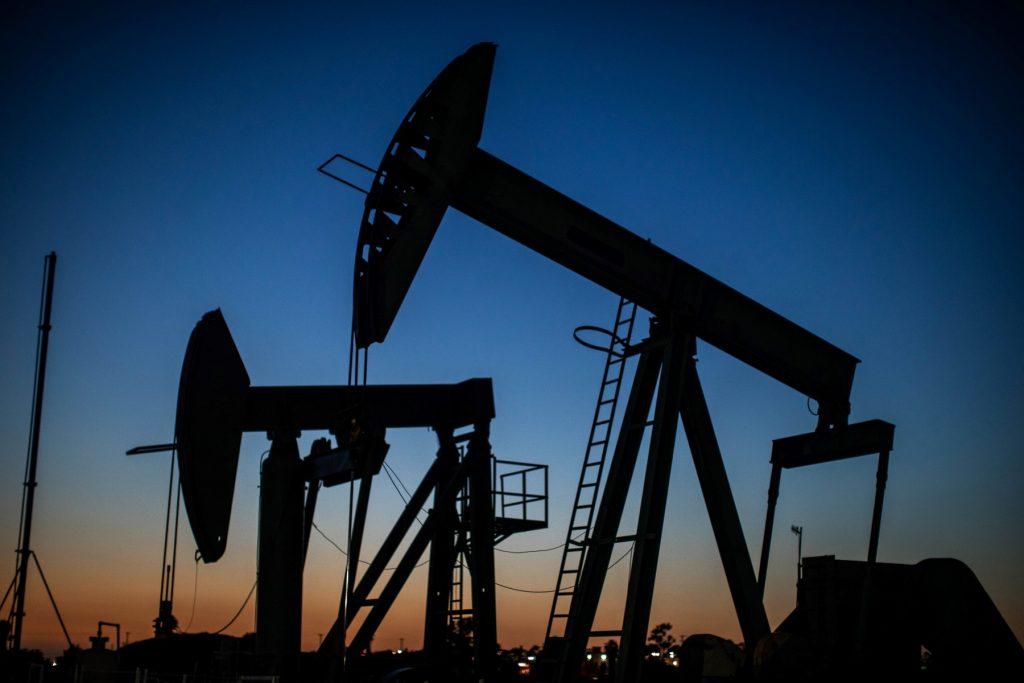Oil leads mad rush to resources, stagflation a risk
Brent crude topped US$117 per barrel and is now up almost 20% on the week, while everything from coal to natural gas and aluminium are on fire as Western nations tighten sanctions on Russia.
Just In
Oil prices sped higher on Thursday as the war in Ukraine drove a mad dash for resources in an ominous sign for global inflation, while Asian shares eked out gains after reassuring comments from the Federal Reserve helped Wall Street bounce.
Brent crude topped US$117 per barrel and is now up almost 20% on the week, while everything from coal to natural gas and aluminium are on fire as Western nations tighten sanctions on Russia.
“Russia supplies around 30% of Europe’s gas and oil imports and accounts for around 11% of world oil production,” said Shane Oliver, head of investment strategy at fund manager AMP. “In short, investors are worried about a stagflationary shock.”
The rush to commodities lifted resource-rich Australian stocks 0.9%, while Indonesia was just off a record high.
Japan’s Nikkei managed a 0.8% gain, while MSCI’s broadest index of Asia-Pacific shares outside Japan nudged up 0.6%.
MSCI added to Russia’s financial isolation by deciding to exile the country from its emerging markets index, while FTSE Russell said Russia would be removed from all its indices.
Fitch slashed Russia’s sovereign credit rating six notches to “junk” status, saying it was uncertain the country could service its debt, and Moody’s soon followed.
After bouncing overnight, S&P 500 stock futures ESc1 were flat, while Nasdaq futures eased 0.1%.
Eurostoxx 50 futures slipped 0.2%, and analysts at JPMorgan had a stark warning for clients.
“We believe investors should underweight the Euro area in both the currency and the equity space given its vulnerability to any further escalation,” they wrote in a note.
“We revised our commodity price forecasts 10-20% higher across the board given the unfolding geopolitical crisis,” they added. “One silver lining is that the crisis forced a dovish reassessment of the Fed by the market, and we continue to assume a ‘moderate’ hiking path.”
Euro under pressure
Fed chair Jerome Powell on Wednesday said rates would likely be raised by only 25 basis points this month, and the war in Ukraine has made the outlook “highly uncertain”.
Futures reacted by pricing out any chance of a half-point hike later in March.
However, Powell did warn the Fed might have to hike more aggressively if inflation kept rising. That took some of the safe-haven steam out of treasuries and 10-year yields were back at 1.85%, from Tuesday’s two-month trough of 1.682%.
European bonds also surrendered some of their recent hefty gains after data showed euro zone inflation hit a record high of 5.8% in January, making it harder for the ECB to keep policy super loose.
Inflation was also on the mind of the Bank of Canada when it kicked of a tightening cycle on Wednesday with a quarter-point rate hike to 0.5%.
The move combined with the strength of oil prices to lift the Canadian dollar to a five-week high at US$1.2625. Other commodity-linked currencies also benefited with the Australian dollar at a four-year peak on the euro.
The euro was likewise on the defensive at US$1.1098, having carved out a 22-month trough overnight at US$1.1056.
The dollar edged up to 115.68 yen as Japan’s trade position is set to worsen given it is a major importer of energy and resources.
Dealers stayed well away from the Russian rouble, though it did trade once at 101.00 per dollar.
The US dollar index stood at 97.502, after reaching its highest since June 2020 at 97.834.
Gold was holding at US$1,927 an ounce and still up 2% on the week so far thanks to safe-haven demand.
Oil flew further past US$110 a barrel on talk the market will remain short of supply for months to come following sanctions on Moscow and a flood of divestment from Russian oil assets by major companies.
Brent put on another US$4.34 to reach US$117.27 a barrel, while US crude rose US$3.32 to US$113.92.
Subscribe to our newsletter
To be updated with all the latest news and analyses daily.
